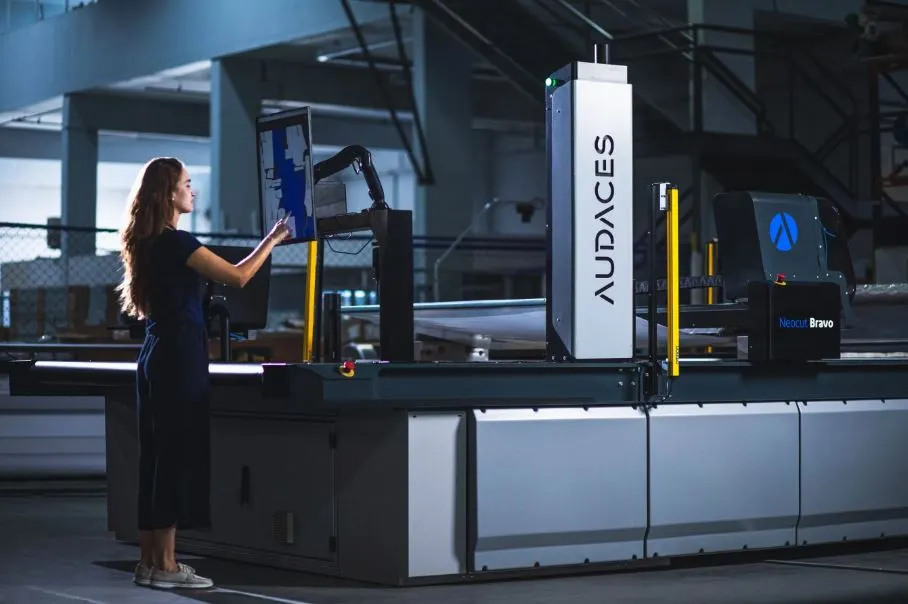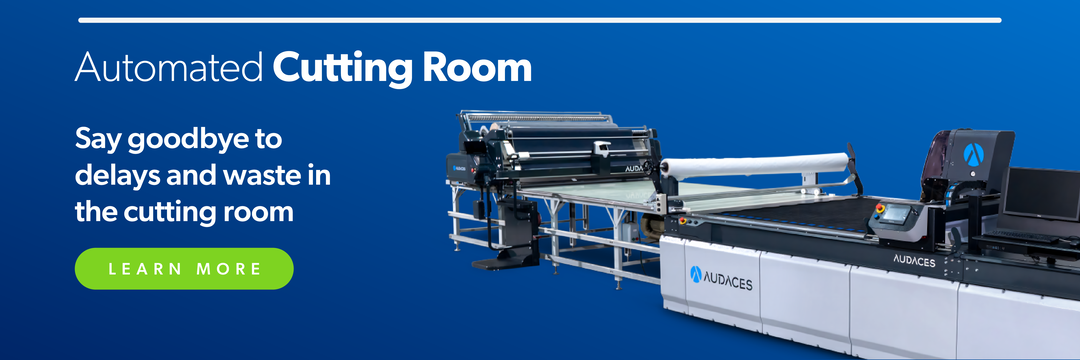Summary
- Singapore is one of the most advanced economies in Asia.
- Its industrial production plays a key role in keeping the country strong and competitive.
- Lead the future of fashion production with Audaces360. Start your free trial now!
If you manage a fashion business, you know the Asian market is a huge player in the field. It’s important to understand how their production processes work, especially in Singapore, a key country.
That’s why we’ll explore the real impact of Singapore industrial production on the fashion industry. We’ll go over a bit of its history, look at key data, and highlight the main regions that stand out in fashion manufacturing.
You’ll also learn how technology is changing the game, making industrial processes faster, smarter, and more connected.
Get inspired to take your production to the next level!
Sumário
What is the impact of Singapore industrial production?
Singapore is famous for its strong and modern industrial base. For the fashion industry, this matters more than ever.
Let’s take a closer look at the influence of Singapore’s industrial production, at home and around the world.
For the country
Singapore’s industrial production helps grow the national economy. It supports jobs, attracts investors, and builds strong industries like electronics, chemicals, and fashion.
In fashion, advanced production helps local brands create better products. They can develop clothes faster, with more precision. This opens new doors for creative design and global sales.
It also brings more value to small and mid-sized fashion companies. They can access tools and facilities that once belonged only to large manufacturers.
For the world
The country may be small, but its industrial power reaches far. It exports high-quality goods, including textiles and fashion items. These reach markets across Asia, Europe, and the Americas.
Fashion brands around the world benefit from Singapore’s reliability. Its factories follow strict quality rules and deliver on time, building trust in the global supply chain.
Singapore industrial production also leads in innovation. New ideas and smart technologies developed in Singapore often spread to other regions. This helps raise global standards in fashion production.
By focusing on smart, clean, and fast manufacturing, Singapore sets an example for the world. It shows how technology and sustainability can go hand in hand.
Learn more: How does the Asia Pacific market impact fashion?
A brief history of Singapore industrial production
Singapore’s fashion industry started small. In the 1960s and 70s, the country focused on textile and garment factories. These businesses helped create jobs during a time of rapid development.
In the 1980s, the government pushed for more high-value industries. Then, many factories upgraded their equipment, with some exploring exports and higher-quality production.
As Singapore grew richer, many low-cost factories moved to other countries. But fashion did not disappear. Instead, it changed. The focus shifted to design, innovation, and high-tech production.
By the 2000s, Singapore was investing in smart manufacturing. Fashion brands began using CAD software, automated machines, and better supply chain tools. New hubs like Tampines and Woodlands started offering high-tech spaces for fashion production.
Learn more: Discover the current landscape of the fashion market and how to stay competitive
Singapore industrial production in numbers
The fashion market in Singapore is highly digital and consumer-driven. In 2022, the fashion and beauty e-commerce sector generated US $640 million, making it one of the country’s top online categories, just behind electronics. This shows how central fashion is to Singapore’s digital economy.
This is because online shopping is now a daily habit. As of 2024, 73.7% of Singaporeans are buying fashion items online. This number is expected to grow to 93.3% by 2028, reflecting a deep integration of e-commerce into everyday life.
The trend is great news for businesses focused on fast and efficient fashion production. High digital engagement means that production needs to keep up with real-time demand, shorter lead times, and constant product updates.
Singapore’s numbers point to one clear fact: digital readiness and fashion go hand in hand. For anyone in the fashion industry, especially in production and logistics, these data offer both a challenge and an opportunity to evolve.
Learn more: How does China industrial production impact fashion?
Key hubs for fashion industrial production in Singapore

Bedok Industrial Park E
This area is known for its strong mix of small and medium-sized factories. Many of them work with textiles, printing, and packaging. These are all important services for the fashion supply chain.
Bedok Industrial Park E is well-connected by road and public transportation. This makes it easy to move materials and finished products. Its location also helps businesses stay close to central Singapore.
Ang Mo Kio Industrial Park
Ang Mo Kio Industrial Park is home to a variety of manufacturing companies. It includes fashion-related businesses like sewing units, dye houses, and accessories suppliers.
Many companies here focus on fast and flexible production. That’s ideal for brands looking to create custom or small-batch collections.
The area is growing as more firms adopt smart manufacturing tools.
Genting Road / MacPherson
This central area is famous for its creative businesses and industrial spaces. It’s a hub for textile processing, printing, and tailoring services.
Genting Road and MacPherson attract designers and startups. These businesses can easily access suppliers, machinery, and skilled labor in one place. The mix of industry and creativity makes this zone perfect for fashion innovation. It supports quick prototyping and product testing.
Want to take your company to the next level and reach peak productivity? Download our free exclusive guide filled with golden tips to get you there!
Woodlands Industrial Estate
Woodlands is one of the largest industrial estates in Singapore. It offers space for both large-scale factories and smaller production units.
Fashion manufacturers here enjoy strong infrastructure. The area is also close to Johor Bahru, which helps with regional sourcing.
This zone is ideal for brands looking to scale production. It has enough space and services to support growing demand.
Tampines Industrial Park
Tampines is a newer industrial zone with modern buildings and facilities. It’s designed for companies that want to use smart technology and green practices. That’s why some fashion tech startups and textile labs have moved into this area.
With good transport links and advanced infrastructure, Tampines is a future-ready choice for fashion manufacturing.
Learn more: Discover Indian fashion with stories, styles and designers
How is technology modernizing industrial production in the country?
Singapore is using advanced technology to change how factories work. In the fashion industry, these changes improve how we design, make, and deliver clothes.
Check out some of the key technologies making this possible:
Automation and robotics
Many factories now use automation and robotics to help with repetitive tasks. This doesn’t replace people, it supports them by taking care of time-consuming steps in the process.
Machines can handle fabric cutting, moving materials, and even packing. With automation, production becomes faster and more consistent.
For workers, this can be a positive change. With machines handling the heavy lifting, people can focus on creative work, quality control, and process improvements. It’s about working smarter — not harder.
3D design and production software
Designing clothes has become faster and more flexible with the help of 3D software. These tools allow fashion professionals to visualize their creations before making a single cut. This means fewer prototypes, less waste, and quicker decisions.
In Singapore, many fashion businesses are adopting these tools to improve collaboration.
Designers, pattern makers, and production teams can work together more easily when everyone sees the same virtual model. It also helps with client approvals and product adjustments.
On-demand manufacturing and Artificial Intelligence
The fashion world is shifting from mass production to smarter, on-demand manufacturing. And technology plays a big role in making this possible.
On-demand production helps reduce overstock and waste. It also allows for more personalized fashion, where items can be made to suit a customer’s style or fit.
Meanwhile, AI helps brands better understand demand by analyzing data, such as sales patterns and customer preferences. This supports decisions about what to produce, in which sizes, and in what quantity.
Learn more: Key challenges in the garment industry and how to solve them
Sustainability-focused technology
Sustainability is no longer optional in the fashion world; it’s a priority. And Singapore industrial production offers many hubs with technology to make the industry cleaner and more responsible.
Smart machines help reduce fabric waste by cutting with precision. At the same time, water and energy-saving systems are now common in dyeing and finishing processes.
Technology also helps track the full journey of each garment, from raw materials to the shop floor.
When fashion teams combine their skills with the right tools, sustainability becomes part of daily production. Not just a goal, but a practice.
Big Data and predictive analytics
Data can tell powerful stories, especially in fashion. With Big Data, businesses in Singapore are learning more about trends, customer behavior, and production efficiency.
Predictive analytics helps teams forecast demand, plan materials, and avoid delays. Instead of reacting to problems, they can prepare ahead, saving time, money, and stress.
This doesn’t mean relying only on numbers. It means using data to support human intuition and experience. The goal is to help teams work with more clarity and less guesswork.
Learn more: Why should your company invest in fabrication technology?
Automate your industrial production with Audaces solutions

Audaces360
Audaces360 integrates cutting-edge digital innovations to optimize workflows in the textile and apparel industry.
It caters to companies of all sizes and types, offering the flexibility to scale with your business needs.
All solutions were carefully developed to address the specific challenges of the field. They streamline the design and production processes, saving valuable time and resources.
The platform boasts a comprehensive range of functionalities, including pattern making, marking, collection management, vector drawing, and 3D creation.
In addition, a fashion Artificial Intelligence to assist you along the way.
Audaces Cutting Room
By embracing cutting-edge technology, garment manufacturers can achieve significant improvements in the production process. From greater design flexibility to enhanced efficiency and reduced costs.
This is where Audaces Cutting Room steps in! Our experts will thoroughly assess your company’s needs and create a comprehensive report.
Then, our team will develop a personalized project to achieve your goals and unlock your company’s full potential.
Rely on Audaces’ cutting-edge machinery to automate your production process. Achieve impeccable cuts on curves and details, speeding up your deliveries and minimizing fabric waste through automation.
See how Aspen scaled their business and achieved a fast return on investment with Audaces Cutting Room. Watch the video below!
FAQ
Singapore’s industrial production supports jobs, attracts investors, and builds strong industries. The country may be small, but it exports high-quality goods, including textiles and fashion items. These reach markets across Asia, Europe, and the Americas.
They include Bedok Industrial Park E, Ang Mo Kio Industrial Park, and Tampines Industrial Park.
Automation and robotics, 3D design and production software, sustainability-focused technology, and Big Data and predictive analytics.










